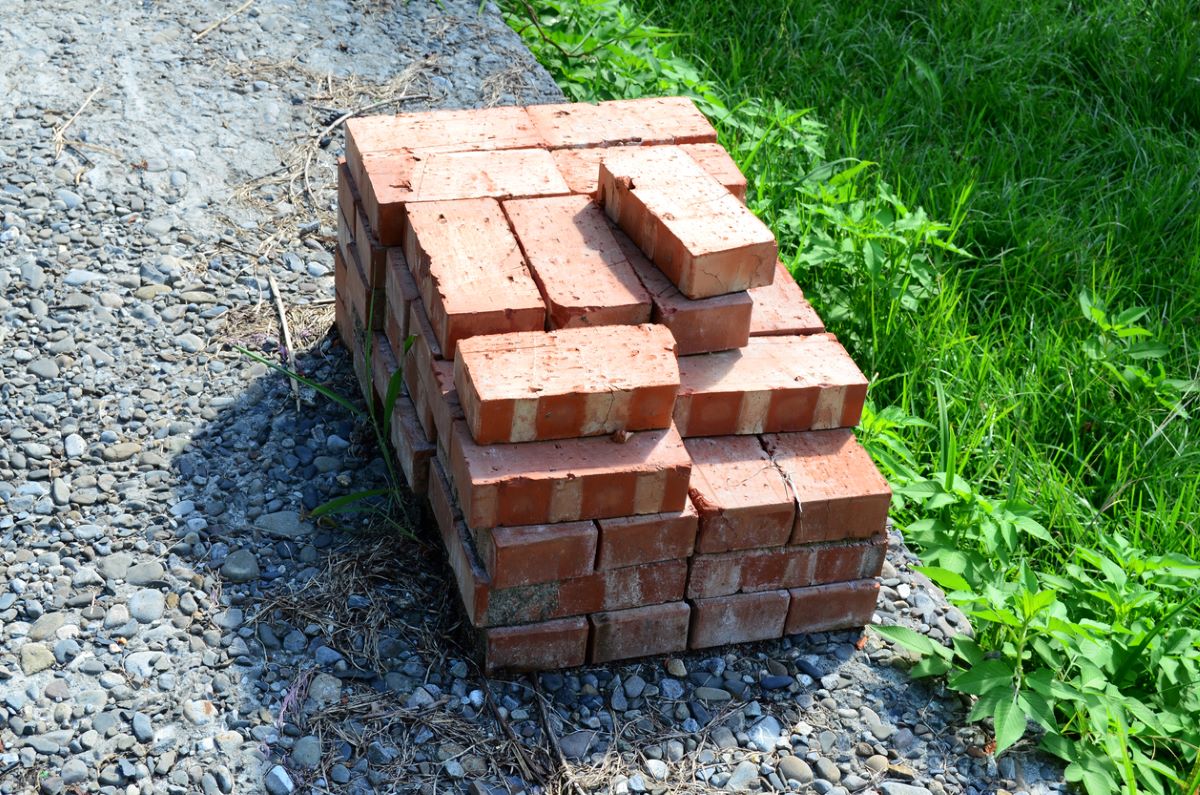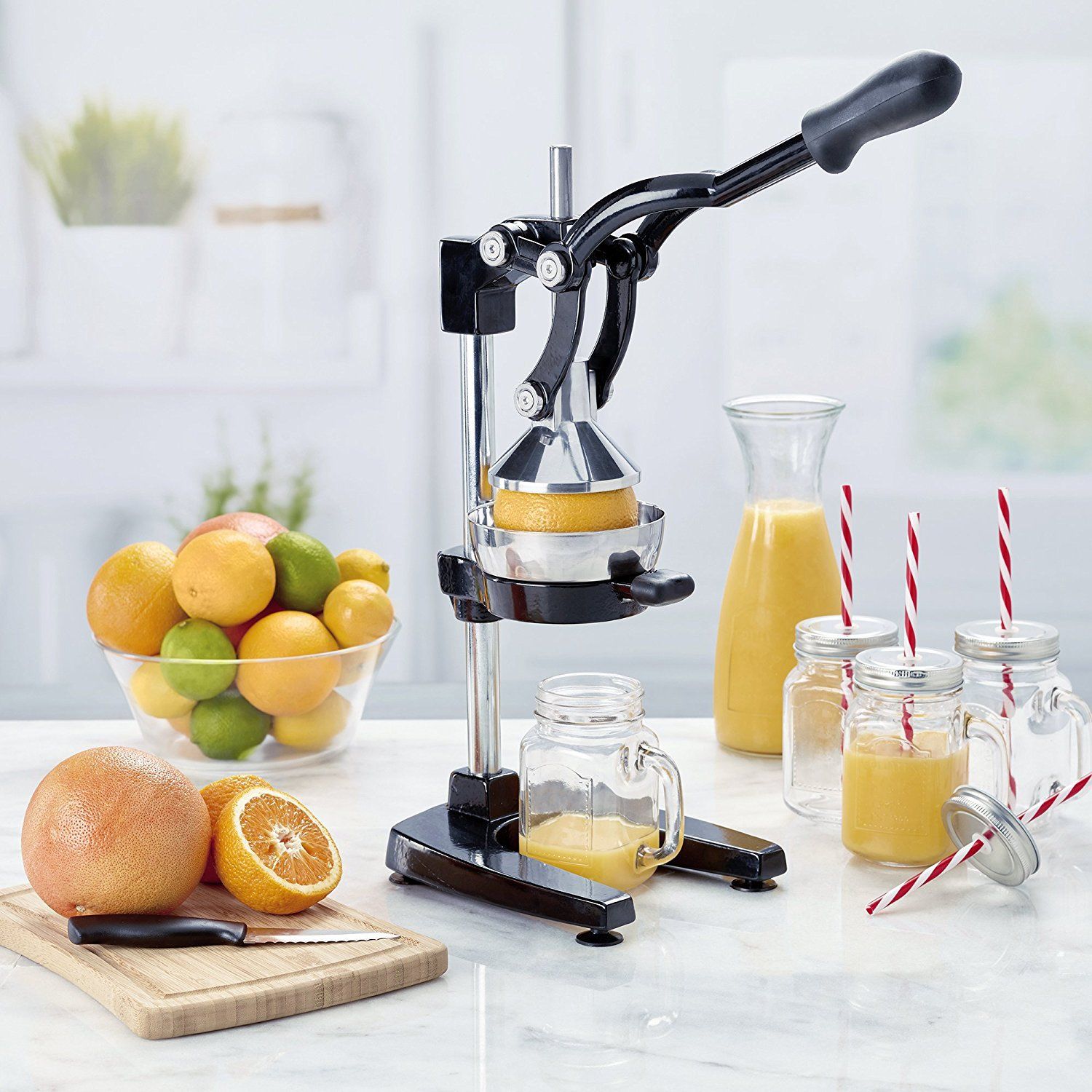

Articles
What Can You Store In An Attic
Modified: March 1, 2024
Store a variety of articles in your attic and maximize your storage space. Find out what items are suitable for attic storage and how to protect them.
(Many of the links in this article redirect to a specific reviewed product. Your purchase of these products through affiliate links helps to generate commission for Storables.com, at no extra cost. Learn more)
Introduction
When it comes to maximizing storage space in your home, the attic is often an overlooked treasure trove. Whether you have a finished attic that serves as a functional living space or an unfinished attic with exposed beams and insulation, this often underutilized area can provide ample storage for a variety of items. From seasonal decorations to sentimental keepsakes, the attic can become a convenient storage solution for those items that you don’t need on a daily basis but want to keep safe and accessible.
In this article, we will explore the different types of items that you can store in your attic, helping you make the most of this valuable space. Whether you’re looking to declutter your home or create a more organized living environment, the attic can serve as a practical storage solution for a wide range of belongings.
Key Takeaways:
- Transform your attic into a treasure trove of storage space for seasonal decorations, unused furniture, out-of-season clothing, sentimental items, sporting equipment, books, childhood toys, electronics, kitchen supplies, and musical instruments. Maximize space and keep belongings safe and accessible.
- Safely store a wide range of items in your attic to free up living space, reduce clutter, and create an organized environment. Properly prepare and pack items, utilize storage solutions, and monitor conditions to ensure belongings remain well-preserved and easily accessible.
Seasonal Decorations
One of the most common items to store in an attic is seasonal decorations. Whether it’s Christmas lights and ornaments, Halloween decorations, or Thanksgiving tableware, these items often take up valuable space in closets or garages when not in use. Storing seasonal decorations in the attic not only keeps them out of sight but also protects them from potential damage.
When storing seasonal decorations in the attic, it’s important to make sure they are properly packed and protected. Use sturdy plastic containers or bins to prevent dust, moisture, and pests from damaging your precious holiday decor. You can also consider using labels or color-coded bins to easily identify and locate specific items when the time comes to decorate for the season.
Additionally, take advantage of the vertical space in your attic by installing shelves or using stackable storage containers. This will help maximize the available storage space and keep your seasonal decorations organized and easily accessible.
Remember to take precautions when storing delicate or fragile items, such as wrapping fragile ornaments in bubble wrap or tissue paper, and securing them in cushioned compartments to prevent breakage.
By utilizing your attic for seasonal decorations, you can free up space in other areas of your home and keep your holiday decor neatly stored and protected until it’s time to bring out the festive cheer once again.
Unused Furniture
If you have furniture pieces that are not currently being used but you don’t want to part with them, the attic is an ideal storage spot. Whether it’s an extra sofa, a dining table, or a bedroom set, storing unused furniture in the attic can help free up valuable space in your living areas without having to get rid of your beloved pieces.
Before moving furniture to the attic, it’s important to properly prepare and protect it. Clean and dust the furniture thoroughly, and consider applying a layer of furniture wax or polish to help maintain its condition while in storage. If possible, disassemble larger furniture items to maximize space and make it easier to transport them to the attic.
Once in the attic, make sure to elevate the furniture off the floor to prevent any potential moisture damage. You can use wooden pallets or plastic risers to create an elevated platform for the furniture to sit on. Cover the furniture with protective sheets or furniture covers to prevent dust accumulation and potential scratches or dents.
It’s also worth noting that extreme temperature fluctuations in the attic can affect the integrity of wood and fabric materials. To mitigate this risk, consider using a dehumidifier or temperature-regulating devices in your attic to maintain stable conditions.
Storing unused furniture in the attic is beneficial not only for freeing up space in your home but also for preserving furniture that holds sentimental or monetary value. By taking the proper precautions and maintaining an organized system, you can safely store and protect your furniture until you’re ready to use it again.
Out-of-Season Clothing
Does your closet feel overcrowded with clothes that are not appropriate for the current season? Don’t worry, your attic can come to the rescue as a storage solution for out-of-season clothing. Whether it’s bulky winter coats, sweaters, or summer dresses, storing these items in the attic will free up space in your closet and keep your clothing organized.
Prior to storing your clothing in the attic, it’s essential to properly clean and prepare them. Launder or dry clean each item to remove any dirt or stains. This will help prevent any potential damage or discoloration during the storage period. Once clean, consider using storage bins or vacuum-sealed bags to protect the clothing from dust, bugs, and moisture.
To optimize space in the attic, you can utilize plastic storage bins that can easily be stacked on top of each other. Make sure to label each bin clearly, indicating the type of clothing or the season it’s intended for. This will make it easier to locate specific items when the seasons change.
It’s important to note that extreme temperatures and humidity levels in the attic can affect the condition of clothing. To minimize this risk, consider using moisture-absorbing products or placing silica gel packets inside the storage bins to help control humidity levels. Additionally, ensure proper ventilation in the attic to prevent the growth of mold or mildew.
Storing out-of-season clothing in the attic not only helps declutter your closet but also protects your garments and extends their lifespan. This way, you can have a well-organized wardrobe that effortlessly transitions with the changing seasons.
Sentimental Items
Attics are often the perfect place to store sentimental items that hold cherished memories. Whether it’s old photographs, handwritten letters, childhood keepsakes, or family heirlooms, these items may not have a practical everyday use but are too precious to part with. Storing sentimental items in the attic allows you to keep them safe and secure while still holding onto the memories they represent.
When storing sentimental items in the attic, it’s important to take precautions to protect them from damage. Start by placing these items in sturdy and moisture-resistant containers or archival boxes, which provide extra protection against moisture, pests, and dust. It’s a good idea to wrap fragile items in acid-free tissue paper or bubble wrap to prevent breakage and deterioration over time.
Consider organizing sentimental items in labeled and categorized boxes, making it easier to locate specific items when you want to reminisce or share them with loved ones in the future. Additionally, you may want to create an inventory or list of the items stored in the attic for easy reference and insurance purposes.
Keep in mind that the condition of sentimental items can be affected by extreme temperature and humidity fluctuations. Installing insulation or using climate-controlled systems in the attic can help regulate the temperature and minimize these effects. Regularly check on the items stored in the attic to ensure they are still in good condition and make any necessary adjustments to protect them further.
Storing sentimental items in the attic allows you to create a safe and dedicated space for preserving your treasured memories. Knowing that these items are protected and accessible whenever you want to revisit those special moments can bring comfort and joy to your life.
Read more: What Can You Store In An Outdoor Shed
Sporting Equipment
If you’re an active individual or have family members who enjoy sports and outdoor activities, you’re likely dealing with the challenge of storing bulky and seasonal sporting equipment. From bicycles and golf clubs to ski gear and camping supplies, the attic can be a convenient storage solution for keeping your sporting equipment organized and out of the way when not in use.
Prior to storing your sporting equipment in the attic, it’s important to clean and properly maintain each item. For example, wipe down bicycles and lubricate the chains to prevent rust. Clean camping gear, ensure it’s dry, and pack it in weatherproof bags or containers to protect it from moisture and pests.
When storing sporting equipment in the attic, consider utilizing hooks, racks, or wall-mount systems to keep items off the floor and create more floor space. Bicycles, for instance, can be hung from the rafters or wall-mounted bike hangers, while golf clubs can be stored in specialized club racks.
For smaller sporting equipment, such as tennis rackets or soccer balls, consider using labeled bins or clear plastic containers to keep them organized and easily accessible. This will make it simpler to find what you need when the time comes for your next outdoor adventure.
It’s worth noting that extreme temperature changes in the attic can affect some sporting equipment, especially items with sensitive materials like ski boots or golf clubs. Consider using climate-controlled storage solutions or implementing insulation in the attic to mitigate these effects and protect your gear.
By utilizing the attic for storing your sporting equipment, you can create a designated space for your gear, keep it organized, and free up valuable space in your garage or basement. With everything neatly stored and easily accessible, you’ll be ready to embark on your next adventure without the hassle of searching for your equipment.
When storing items in an attic, be mindful of temperature fluctuations and potential moisture. Use plastic bins to protect items from dust and pests, and consider adding insulation to regulate the temperature.
Books and Magazines
If you’re an avid reader or someone who enjoys collecting books and magazines, you may find that your collection outgrows the space available on your bookshelves. The attic can provide a suitable storage area for your literary treasures while keeping them protected and organized.
Before storing books and magazines in the attic, it’s important to ensure they are clean and in good condition. Dust each book or magazine off and inspect for any signs of damage or pests. Consider using bookends or bookshelves to keep the items upright and prevent them from leaning or becoming damaged while in storage.
When storing books and magazines, it’s essential to protect them from humidity and potential water damage. Use plastic storage bins or containers with lids to shield them from dust and moisture. Place silica gel packets inside the containers to absorb excess moisture and prevent the growth of mold or mildew.
Organize your books and magazines in the attic by category or author for easy retrieval in the future. You can also create a catalog or list of the items stored in the attic, making it simpler to locate specific titles without having to search through all the containers.
It’s important to note that extreme temperature fluctuations in the attic can affect the condition of books and magazines, particularly those with delicate paper or bindings. Consider installing insulation or using climate-controlled storage solutions to maintain a more stable temperature and minimize potential damage.
Storing your books and magazines in the attic not only helps declutter your living spaces but also preserves your collection for future enjoyment. By keeping them organized and protected, you can ensure that your literary treasures remain in good condition and ready for your reading pleasure whenever you desire.
Childhood Toys
For many of us, childhood toys hold sentimental value and bring back cherished memories of our younger years. If you find yourself in possession of a collection of childhood toys that you’re not ready to part with, the attic can serve as a perfect storage space. By safely storing these toys in the attic, you can keep them preserved and ready to be passed down to future generations or revisited for nostalgic purposes.
Prior to storing childhood toys in the attic, it’s important to clean them thoroughly. Remove any dirt or dust that may have accumulated over the years. For toys with electronic components, consider removing batteries to avoid corrosion or damage. If there are any broken or damaged toys, consider repairing them before storing or deciding if it’s best to part with them.
When storing childhood toys in the attic, it’s best to keep them in sealed plastic bins or containers to protect them from dust, pests, and potential moisture damage. Label each container with the contents, making it easier to locate specific toys when you want to revisit them or share them with loved ones in the future.
Consider organizing the toys by age range, type, or sentimental value. This will make it simpler to find specific toys when desired, and it will also ensure that delicate or fragile toys are stored carefully to prevent damage.
Keep in mind that extreme temperature fluctuations can affect the condition of toys, especially those made of plastic or with delicate paint or stickers. Consider using climate-controlled storage solutions or implementing insulation in the attic to protect the toys from drastic temperature changes.
By storing childhood toys in the attic, you can preserve the sentimental value and memories associated with these cherished items. When the time comes to share them with your own children or grandchildren, you can take comfort in knowing that the toys are safely stored and ready to be passed down to the next generation.
Electronics and Appliances
As technology continues to evolve, you may find yourself with older electronics or appliances that you no longer use but aren’t quite ready to part with. If that’s the case, the attic can serve as a convenient storage space for these items. From outdated computers and gaming consoles to unused kitchen appliances, the attic can keep these electronic devices and appliances out of sight while preserving their condition.
Prior to storing electronics and appliances in the attic, it’s important to clean them thoroughly and ensure they are in proper working condition. Remove any dust or debris and package any loose cords securely. If applicable, consider removing batteries or storing them separately to prevent corrosion.
When storing electronics and appliances, it’s best to keep them in sealed plastic bins or containers to protect them from dust, moisture, and potential insect damage. Wrap delicate items in bubble wrap or foam padding to provide extra cushioning and protection against potential bumps or falls.
Label each container with the contents and make an inventory list of the stored electronics and appliances. This will make it easier to locate specific items when needed and ensure that you don’t forget what you have stored in the attic.
Keep in mind that extreme temperatures can negatively affect electronics and appliances. Heat can damage sensitive components, while cold temperatures can cause condensation and potential moisture damage. Consider using climate-controlled storage solutions or selecting a part of the attic that is less prone to temperature fluctuations.
Storing electronics and appliances in the attic allows you to declutter your living spaces and keep these items safely stored until needed again. Keeping them protected and organized ensures that they remain in good condition, preserving their value and providing the opportunity for reuse in the future.
Read more: What Can You Make With A Dehydrator
Overflow Kitchen Supplies
Do you find yourself struggling to find space in your kitchen cabinets or pantry for all your kitchen supplies? If so, the attic can be a useful storage solution for overflow kitchen supplies. From extra cookware and serving dishes to seasonal baking items and small appliances, utilizing the attic can help free up valuable space in your kitchen while keeping these items accessible.
Prior to storing kitchen supplies in the attic, it’s important to clean and organize them. Wash and dry all cookware, dishes, and utensils to remove any food residue or stains. For small appliances, make sure they are thoroughly cleaned and dried before storing them. Keep similar items together and group them by category to facilitate easy retrieval later.
When storing kitchen supplies in the attic, consider using sealed plastic bins or containers to protect them from dust, pests, and potential moisture. Label each container with the contents and use clear bins if possible to make it easier to locate specific items when needed.
To optimize space in the attic, stack the containers or use shelving units. Utilize vertical space by hanging pots and pans using hooks or installing a pot rack. This not only saves space but also keeps them organized and easily accessible.
Avoid storing perishable food items in the attic, as the fluctuating temperatures and pests in the attic can compromise their quality and safety. Stick to non-perishable items such as canned goods, dry goods, and unopened packaged food items.
It’s important to periodically check on the stored kitchen supplies to ensure they remain in good condition. Look out for any signs of damage, pests, or moisture. Proper insulation and ventilation in the attic can help maintain stable temperature and humidity levels, reducing the risk of damage to your stored supplies.
By utilizing the attic for overflow kitchen supplies, you can declutter your kitchen and create a more organized space for everyday cooking. With easy access to your extra kitchen items, you can enjoy a well-equipped kitchen while maintaining a streamlined and efficient cooking environment.
Musical Instruments
If you’re a musician or have family members who play musical instruments, you understand the importance of keeping them protected and well-maintained. The attic can be an ideal storage space for your musical instruments, providing a safe and accessible area while freeing up valuable space in your home.
Before storing musical instruments in the attic, it’s crucial to clean and properly prepare them. Wipe down each instrument with a soft cloth to remove any dust or debris. For string instruments, loosen the strings slightly to relieve tension, and consider applying a thin layer of polish or oil to maintain the wood’s integrity.
When storing instruments in the attic, opt for cases or padded bags specifically designed for each instrument. These cases provide protection from dust, moisture, and potential impact damage. Make sure the cases are securely closed and stored in a way that avoids excessive pressure or crushing.
Consider creating a dedicated space in the attic for musical instruments by installing hooks or using wall-mounted brackets to hang guitars or violins. This not only saves space but also helps prevent the instruments from getting damaged by being leaned against walls or stacked on top of each other.
It’s important to monitor the attic’s temperature and humidity levels to ensure they remain within the suitable range for musical instruments. Extreme fluctuations can cause harm to the instruments’ materials and impact their sound quality. Consider using a dehumidifier or humidity control device to regulate the climate in the attic.
Regularly check on the condition of your stored instruments to ensure they are not showing signs of damage, such as cracks, warping, or mold. Proper ventilation and insulation in the attic will help minimize potential risks.
By utilizing the attic for storing musical instruments, you can ensure their protection while maximizing your living space. When you or your loved ones are ready to play, you can easily access the instruments and enjoy the beautiful sounds they produce in a safe and organized manner.
Conclusion
The attic is often an underutilized space in our homes, but with some thoughtful organization and planning, it can become a valuable storage solution. From seasonal decorations and unused furniture to out-of-season clothing and sentimental items, the attic can provide a safe and accessible place to keep these belongings out of sight while preserving their condition.
By taking the time to properly clean, prepare, and pack items before storing them in the attic, you can safeguard them from dust, pests, and potential damage. Utilizing plastic bins, labels, and stackable storage solutions maximizes space and keeps your belongings organized for easy retrieval.
Remember to consider the specific needs of the items you store in the attic. Extreme temperature fluctuations and humidity levels can impact the condition of certain items, so insulation, proper ventilation, and temperature control measures may be necessary.
By using the attic as a storage space, you can free up valuable room in your living areas, reduce clutter, and create a more organized living environment. Whether it’s seasonal decorations, childhood toys, or musical instruments, the attic can provide a safe and accessible home for a wide range of items.
Remember to periodically check on the condition of your stored items and make any necessary adjustments to ensure their protection. By treating the attic as a valuable storage area, you can have peace of mind knowing that your belongings are well-preserved and easily accessible when needed.
So, take advantage of the space in your attic and transform it into an organized storage haven. By doing so, you can make the most of your living space while keeping your belongings safe and secure for years to come.
Frequently Asked Questions about What Can You Store In An Attic
Was this page helpful?
At Storables.com, we guarantee accurate and reliable information. Our content, validated by Expert Board Contributors, is crafted following stringent Editorial Policies. We're committed to providing you with well-researched, expert-backed insights for all your informational needs.














0 thoughts on “What Can You Store In An Attic”